Of all the sweeping conservation laws of the 1960s that came about in response to concern over the worsening environmental degradations accompanying the prosperous post-World War II march of progress, the Wilderness Act of 1964 most expanded the boundaries of conservation thinking.
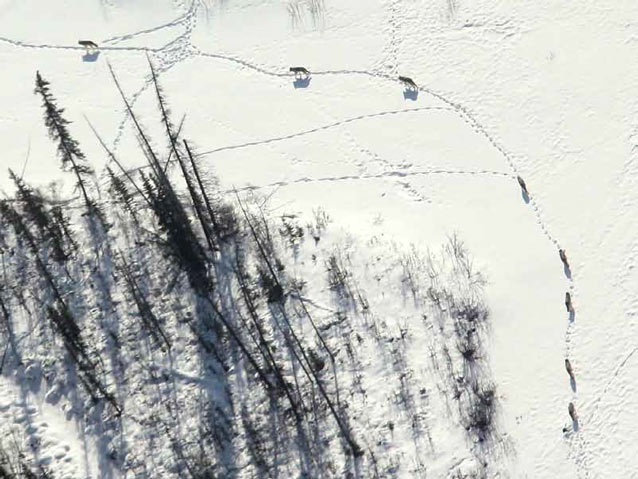
Courtesy Sandy Hamilton
The rapid loss of natural landscapes, the destructive logging, mining, and agricultural practices, the spread of pollution and pesticides, and the awesome power and fallout of the atomic bomb had signaled a new order of environmental threat. Biologist and Wilderness Society president Olaus Murie (1960) summarized it as “the real problem of what the human species is to do with this earth.”
He and other leaders of the growing wilderness movement sought legislation reaching beyond the traditional conservation of resources to the protection of entire ecosystems. But their Wilderness Act went beyond protecting all components of a designated area’s natural condition. Going further than any previous conservation initiative, it also specified perpetuation of the evolutionary process of their origin, their wildness.
Compromises have been made in meeting the act’s mandate for preserving both an area’s natural conditions and its wildness. Nevertheless, wilderness status has been quite successful in protecting both from development, resource exploitation, harmful public uses, and the like—the focal threats of the 1950s and early 1960s.
Visionary as it was, however, the Wilderness Act did not anticipate today’s human-driven, global-scale changes. Nor did the act anticipate how such changes undermine basic assumptions about “natural” conditions. It could not anticipate the emerging post-natural era of the Anthropocene.
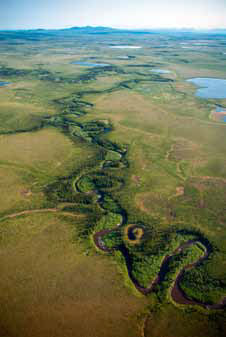
NPS Photo
The Anthropocene
Nobel laureate Paul Crutzen and other Earth-system scientists who advanced the Anthropocene concept describe the state it encapsulates:
Human activities have become so pervasive and profound that they rival the great forces of Nature and are pushing the Earth into planetary terra incognita. The Earth is rapidly moving into a less biologically diverse, less forested, much warmer, and probably wetter and stormier state. (Steffen et al. 2007)
Since Bill McKibben’s 1989 pronouncement of “The End of Nature,” findings from the ecological and physical sciences have documented the pervasive globalization of human influence on protected areas, including wilderness.
Everywhere, the degree to which broad scale environmental changes are anthropogenic or “natural” in origin are becoming less distinguishable, and more synergistic. The recent text Beyond Naturalness (Cole and Yung 2010) raised awareness of the now problematic goal of maintaining natural conditions—that is, apart from human influence—that had always guided stewardship of protected areas.
And now National Park Service (NPS) director Jonathan Jarvis has declared that “the paradigm of allowing nature to rule the parks is no longer viable.” “Now the challenge before us,” he said, “is to see the world with nature and humans intertwined.” (Jarvis 2010).
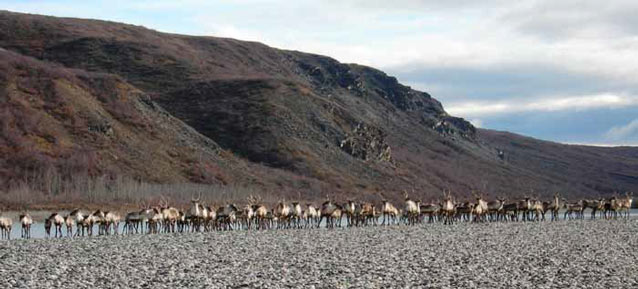
NPS Photo
This increasingly intertwined world of the Anthropocene will exacerbate tensions between the goals of perpetuating a wilderness area’s wildness and its other natural conditions. One underlying problem is that the act specifies that a wilderness be managed to perpetuate its wild “untrammeled” condition and also “so as to preserve its natural conditions” (Sec. 2[c]). Although the act did not define “natural conditions,” the Congressional Record shows that proponents intended that wilderness would perpetuate resource conditions such as wildlife species, their habitats, ecosystems, and historic viewsheds, “unimpaired” (Sec. 2[a]); or essentially as they were at the time of designation.
A larger problem is that the act also specifies that its purposes are to be “within and supplemental” to the purposes of national parks, wildlife refuges, forests, and Bureau of Land Management (BLM) areas that are designated as wilderness (Sec. 4[a]). National park wilderness areas, for example, remain subject to the 1916 NPS purpose of conserving scenery, natural objects, and wildlife “unimpaired”. National wildlife refuges, for example, retain their statutory purposes and other mandates to perpetuate specific high value species.
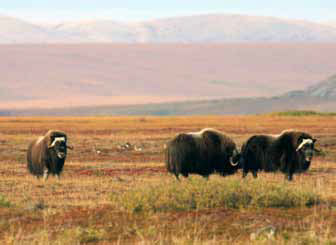
NPS Photo
The Dilemma of Wilderness Stewardship
The dilemma of wilderness stewardship (Cole and Yung 2010), as this has come to be called, is that in many and perhaps most wilderness areas, focal species and other favored natural conditions will not be perpetuated without management interventions. These will be needed if areas are to resist or adapt to global-scale impacts. Where the hope is to regain lost conditions, restoration efforts may be needed. Such actions would compromise or be antithetical to preserving the area’s wild, untrammeled condition.
What then should we as wilderness stewards do? We should start with the admonitions of Howard Zahniser, chief author of the Wilderness Act, who warned against management programs that would erode wild character. “We must always remember,” he stated, “that the essential quality of wilderness is its wildness” (Zahniser 1992). Interventions in wilderness should never be considered unless absolutely essential to meeting other mandates.
But in light of the emerging conflict among purposes that Zahniser and the other framers of the Wilderness Act could not have foreseen, and considering the inevitable calls to prevent loss of favored resources, can we realistically expect that all 109 million acres of the nation’s 757 wilderness areas will be managed for real wildness?
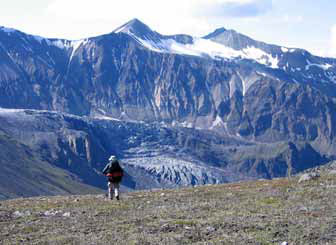
NPS Photo
Unfortunately, no. As a solution, ecologist Daniel Botkin (1990) proposed a divided wilderness system. Some areas would be designated as “pre-agricultural wilderness” wherein conditions would be maintained as they were when first viewed by Europeans. “No-action wilderness” would remain “untouched by direct human actions, no matter what happens.” Fearing a homogenized wilderness system wherein both wildness and natural conditions are “compromised everywhere, and optimized nowhere,” ecologist David Cole (2000) proposed an approach for “allocating separate lands to each opposing value and embracing diversity.” Some wilderness units could be designated as true hands-off, nonintervention areas where wildness is preeminent. Within them, ecological systems would be allowed to adapt and evolve as they will.
We would need to accept that “natural conditions” will change and some preferred species, for example, will decline or be replaced by others more suited to changing conditions. In such areas we would accept that their purpose is not to perpetuate their current components and biotic assemblages. Instead, their purpose would be to protect the unfettered processes of their creation.
True, anthropogenic effects will have changed the conditions that evolution responds to, but the processes by which evolution responds would remain autonomous. They would remain untrammeled, free of conscious intent, and not otherwise subject to the projection of human desire. This approach would require forgoing all interventions and restoration efforts—even, for example, removal of invasive species. Hold them off at the border if you can, but once established, they are part of the “natural order” of what may become a novel ecosystem.
Neither remoteness nor a wild-by-default strategy will assure permanent perpetuation of wildness anywhere. Deliberate, proactive choices need to be made. To facilitate them, agency wilderness policies would need to be revised to prescribe a procedure for deciding where or to what degree each wilderness area’s wildness purpose or its other purposes will have primacy, where maintaining one would compromise the other. Some laws underlying these policies may need to be amended. Decisions would need to be informed by science, but they must be made in the social and political arenas, considering many factors, including probable effects on high-value resources and effects on adjacent lands. Difficult choices and painful tradeoffs would be inevitable.
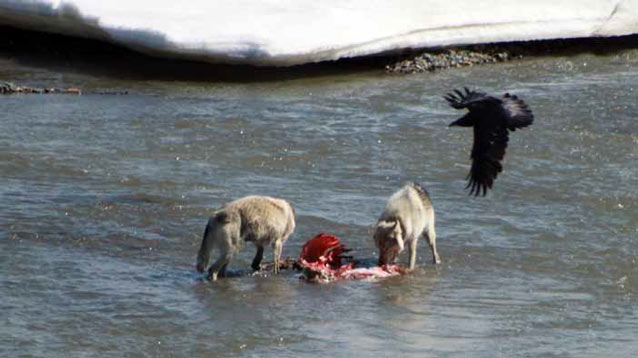
NPS Photo / Cindy Gonterman
Yes, the prospect of a divided wilderness system is awfully disconcerting. The alternative, however, is incremental and cumulative erosion of wildness everywhere.
But in an era of ubiquitous anthropogenic effects that influence, if only ever so slightly, the evolutionary trajectory of every landscape, can we perpetuate real wildness anywhere? Yes, wildness, that evocative and elusive quality of wilderness, can be a permanent legacy, if correctly understood.
What is Wilderness?
Delving into the etymology of wild, historian Roderick Nash (1982) traces its early Teutonic and Norse language origins to the root word will, meaning self-willed, or uncontrollable. This follows Henry David Thoreau’s succinct definition: “Wild—past particle of to will, self willed” (Turner 1996). But Thoreau knew nature has no will per se; he began the tradition of describing wildness in terms of its antithesis: not subject to human will.
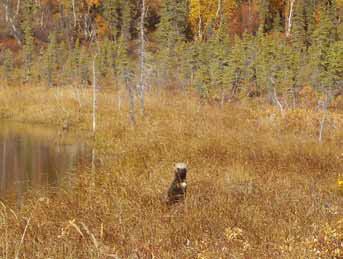
NPS Photo
Early wilderness movement leader Robert Marshall summarized this central condition of wilderness as “its entire freedom from the manifestations of human will . . .” (1956). Marshall’s friend Zahniser went on to describe this freedom as “untrammeled” which he defined as “not being subject to human controls and manipulations that hamper the free play of natural forces” (Zahniser 1959). Untrammeled became the key word in the Wilderness Act’s definition of wilderness as “where the earth and its community of life are untrammeled by man.” Murie (1960) called it simply “nature’s freedom.” Based on the intent of those who most influenced and wrote the Wilderness Act, wildness can thus be defined as . . . a condition of a landscape characterized by its freedom from the human intent to alter, control, or manipulate its components and ecological and evolutionary processes.
Wild, then, is not synonymous with pristine or virgin. Rather, it is the state wherein those evolutionary processes of an area’s genesis—free from human purpose, utility, or design—are allowed to shape its future. Thus, not requiring the absence of all human effect, wildness can persist in environments that have been altered or continue to be influenced by external human factors such as climate change—as long as we refrain from interfering with nature’s autonomous response.
The Human Relationship Dimension
Challenging our understanding of wildness is the fact that it depends upon our willingness to leave an area’s functioning outside the realm of our volition. And because it is therefore a landscape condition dependent upon human intent, wildness is at once both a landscape condition and a human-nature relationship. Both are legacies we should leave to the future.
Most readily recognized by the managing agencies are the ecological and scientific reasons for perpetuating the wild landscape condition. As Aldo Leopold (1949) espoused, wild areas can serve as baselines for understanding how unmanaged ecological systems respond to anthropogenic change. They can serve as a “control” for assessing the effectiveness of interventions and restoration efforts implemented elsewhere.
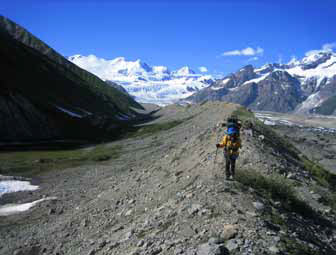
NPS Photo
“The Need for Wilderness Areas” (1956), is Zahniser’s canonical essay explaining the intent of his pending wilderness bill (and part of the act’s legislative history). In it Zahniser included these and recreational and aesthetic values as among the reasons for the legislation. But he emphasized that most importantly, wild areas could serve as reference points “essential to a true understanding of ourselves, our culture, our own natures, and our place in all nature.” He went on to explain:
This need is for areas of the earth within which we stand without our mechanisms that make us immediate masters over our environment—areas of wild nature in which we sense ourselves to be, what in fact I believe we are, dependent members of an interdependent community of living creatures that together derive their existence from the Sun.
Therein Zahniser summarized a need underpinning the wilderness idea (and now, also the Anthropocene concept). That is the need for an expanded world-view, to see ourselves in relation to all life, in the larger scheme of things.
Why Wilderness?
When we left our origins as creatures of the wild and embarked on the Neolithic project of altering, then controlling our immediate environment, we began changing the Earth, and changing who we are in relation to it. Today we are not “part and parcel with nature” as Thoreau (1862) understood nature. We are no longer the same members of the life community Zahniser (1956) described. We are already well past being “only fellow voyagers with other creatures in the odyssey of evolution” as Leopold (1949) wrote.
We should acknowledge and look beyond this reality of our time. We should look well beyond, to the next century or two of the Anthropocene. Imagine when synthetic environments, novel and designer ecosystems, domesticated DNA, planetary geoengineering, and who-knows-what come to be integral to the world formerly known as natural. We can only speculate as to which “natural” conditions of wilderness our distant descendants might wish we had attempted to perpetuate through efforts to resist or control change. Who knows what conditions would evolve in areas left free to evolve, or the consequences of interfering with their adaptation? Areas left wild can serve as a baseline for understanding how ecosystems function and transform when left alone.
So too, areas set apart for wildness may serve future generations as a baseline for understanding their own nature and their place in nature, whatever forms nature then takes. Left as living museums of unhampered evolution, wild areas can be touchstones to ways of knowing and relating to the world that shaped us as a species. They can serve as reference points as humankind reshapes its world. On a planet increasingly permeated with human intentionality, areas we allow to be there for themselves, that we allow to become what they will, can stand in contrast to human hubris. They can counter the dominating presumption that everything exists in relation to us. As Nash (1982) emphasizes, their perpetuation would be a gesture of environmental humility, and an encouraging demonstration and reminder of our capacity for restraint.
As the naturalness of natural areas continues to recede, remnant enclaves of wildness can better serve the age-old quest to understand who we are in relation to the world. The notion of naturalness has always been subjective and culture-bound. But wildness, the eternal process of evolution—of our species and all life, of this planet, its sun and universe and all others—is the objective, ultimate, and unifying reality. Wildness is our true, ongoing creation story. It can be a grounding point, if we will, for creating an ethic to confront, as Murie (1960) said, “the real problem of what the human species is to do with this earth.” Intangible, immeasurable, nonutilitarian: The otherness of wildness is a resource in itself.
The question of what future for wildness within our conservation estate confronts us with paradox, the notion of areas, as Zahniser said, “that are so managed as to be unmanaged.” Wildness challenges us with the irony that self-willed places will only continue through our will. To have areas free of human purpose must be a resolute human purpose.
References
Cole, D. 2011.
Planned Diversity. International Journal of Wilderness. 17 (2): 9-14.
Cole, D. and L. Yung. 2010.
Beyond Naturalness: Rethinking Park and Wilderness Stewardship in an Era of Rapid Change. Washington, D.C.: Island Press.
Jarvis, J. 2010.
Uncertain Path: A Search for the Future of the National Parks. Forward Berkeley: University of California Press.
Leopold, A. 1949.
A Sand County Almanac. New York: Oxford University Press Inc.
Marshall, R. 1956.
Alaska Wilderness. Berkekey: University of California Press.
McKibben, B. 1989.
The End of Nature. New York: Anchor Books, Doubleday.
Murie, O. 1961.
Wilderness Philosophy, Science, and the Arctic National Wildlife Range. Science in Alaska. Alaska Division of the American Association for the Advancement of Science.
Murie, O. 1960.
Letter from Murie to Hon. E. L. Bartlett, August 17, 1961. Author’s files.
Nash, R. 1982.
Wilderness and the American Mind. 3rd ed. New Haven: Yale University Press.
Steffen, W., P. Crutzen, and J. McNeill. 2007.
The Anthropocene: Are Humans Now Overwhelming the Great Forces of Nature? Ambio 36 (8): 614-621.
Thoreau, H. 1862.
Walking. Atlantic Monthly, June issue.
Turner, J. 1996.
The Abstract Wild. Tucson: University of Arizona Press.
Zahniser, E. ed. 1992.
Where Wilderness Preservation Began: Adirondack Writings of Howard Zahniser. Utica, NY: North Country Books.
Zahniser, H. 1956.
The Need for Wilderness Areas. Living Wilderness. 59: 37-43.
Part of a series of articles titled Alaska Park Science - Volume 13 Issue 1: Wilderness in Alaska.
Last updated: August 6, 2015
